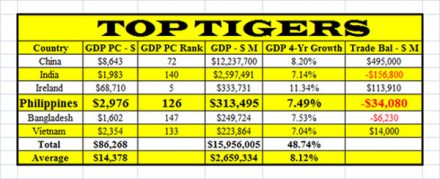By Lucero (Luz) Mejia
MUST BE ORGANIC: DIRTY DOZEN
♦ Apples ♦ Cherries
♦ Grapes ♦ Nectarines
♦ Peaches ♦ Pears
♦ Strawberries ♦ Red raspberries
♦ Potatoes ♦ Bell peppers
♦ Celery ♦ Spinach
CLEAN DOZEN
♦ Banana ♦ Kiwi
♦ Pineapple ♦ Mango
♦ Papaya ♦ Asparagus
♦ Avocado ♦ Broccoli
♦ Cauliflower ♦ Onion
♦ Sweet corn ♦ Green peas
Here’s a closer look at the 2015 Dirty Dozen:
1. Celery
Celery has no protective skin, which makes it almost impossible to wash off the chemicals (64 of them!) that are used on crops. Buy organic celery, or choose alternatives like broccoli, radishes and onions.
2. Peaches
Multiple pesticides (as many as 62 of them) are regularly applied to these delicately skinned fruits in conventional orchards. Can’t find organic? Safer alternatives include watermelon, tangerines, oranges and grapefruit.
3. Strawberries
If you buy strawberries, especially out of season, they’re most likely imported from countries that use less-stringent regulations for pesticide use. 59 pesticides have been detected in residue on strawberries. Can’t find organic? Safer alternatives include kiwi and pineapples.
4. Apples
Like peaches, apples are typically grown with the use of poisons to kill a variety of pests, from fungi to insects. Tests have found 42 different pesticides as residue on apples. Scrubbing and peeling doesn’t eliminate chemical residue completely, so it’s best to buy organic when it comes to apples. Peeling a fruit or vegetable also strips away many of their beneficial nutrients. Can’t find organic? Safer alternatives include watermelon, bananas and tangerines.
5. Blueberries
New on the Dirty Dozen list in 2015, blueberries are treated with as many as 52 pesticides, making them one of the dirtiest berries on the market.
6. Nectarines
With 33 different types of pesticides found on nectarines, they rank up there with apples and peaches among the dirtiest tree fruit. Can’t find organic? Safer alternatives include watermelon, papaya and mango.
7. Bell Peppers
Peppers have thin skins that don’t offer much of a barrier to pesticides. They’re often heavily sprayed with insecticides. (Tests have found 49 different pesticides on sweet bell peppers.) Can’t find organic? Safer alternatives include green peas, broccoli and cabbage.
8. Spinach
New on the list for 2015, spinach can be laced with as many as 48 different pesticides, making it one of the most contaminated green leafy vegetable.
9. Kale
Traditionally kale is known as a hardier vegetable that rarely suffers from pests and disease, but it was found to have high amounts of pesticide residue when tested this year. Can’t find organic? Safer alternatives include cabbage, asparagus and broccoli.
10. Cherries
Even locally grown cherries are not necessarily safe. In fact, in one survey in recent years, cherries grown in the U.S. were found to have three times more pesticide residue then imported cherries. Government testing hasfound 42 different pesticides on cherries. Can’t find organic? Safer alternatives include raspberries and cranberries.
11. Potatoes
America’s popular spud re-appears on the 2015 dirty dozen list, after a year hiatus. America’s favorite vegetable can be laced with as many as 37 different pesticides. Can’t find organic? Safer alternatives include eggplant, cabbage and earthy mushrooms.
12. Grapes
Imported grapes run a much greater risk of contamination than those grown domestically. (Only imported grapes make the 2015 Dirty Dozen list.) Vineyards can be sprayed with different pesticides during different growth periods of the grape, and no amount of washing or peeling will eliminate contamination because of the grape’s thin skin. Remember, wine is made from grapes, which testing shows can harbor as many as 34 different pesticides. Can’t find organic? Safer alternatives include kiwi and raspberries.
Call Lucero (Luz) Mejia with your questions and comments at 609 844-0775. Or you can Email her at [email protected]. She has a Master of Science degree in Nutrition, is a Certified Nutrition Counselor, a Certified Fitness Professional, a Certified Muscle Activation Techniques Specialist, a Certified Ohashiatsu Practitioner, and a Certified Zumba Instructor. Visit her website:








